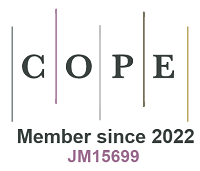Self-assembled nanostructures and materials: smart and bright!
Self-assembly is a widely observed phenomenon in the natural world, where building blocks (e.g., small molecules, macromolecules, colloids, macroscopic particles, etc.) are synergistically organized through multiple weak interactions to form dynamic multi-component assembled systems in a programmable and controllable manner[1-3]. This enables the creation of various nanostructures and materials with tailored properties and complex functions. The development of artificial molecular assembly and biomimetic assembly research can provide new methods and tools for investigating and understanding thermodynamics and kinetics of self-assembled processes. By deeply understanding self-assembly at the molecular level, researchers step forward to fabricate self-assembled nanostructures or materials with desired geometries and properties, which provide more opportunities for high-performance applications, such as therapy, imaging, energy harvesting, catalysis, signal dynamics regulation, and so on[4-6]. Through elaborate design of molecules or building blocks with desired structural parameters and optimization of experimental conditions to control assembled pathways, various materials with advanced and improved functions could be envisioned.
The Special Issue is focused on the recent progress of self-assembly structures or materials in broad interdisciplinary areas, which involve organic/inorganic chemistry, polymer chemistry, colloid and surface chemistry, nanotechnology, soft materials, and material science. Recently, many scientists have developed self-assembled systems based on biopolymers, such as DNA, proteins, and polypeptides, as well as other natural or synthetic biopolymers[7,8]. For example, Zhong et al. utilized the dynamic and exchangeable nature of DNA hydrogen bonding to build a series of artificial dynamic nucleic-acid-based networks[9].Their review highlights the potential of DNA networks for mimicking biological transformations and addresses the challenges of building dynamic networks with life-like behavior in cell-like confined environments. Apart from supramolecular DNA-based nanotechnology, Sun et al. summarized the recent advances in host-guest assemblies for enhanced photothermal therapy[10]. Taking advantage of the dynamic features and unique microenvironments of host-guest complexes, we discussed improved photothermal efficiency, enhanced distribution at target cancer sites, and multimodal therapy. This opens an alternative avenue for high-performance biomedical applications. Recently, Mao et al. developed copper-based chalcogenides with well-controlled electrical and optical properties, demonstrating huge opportunities for biomedical and clinical applications[11]. Besides utilizing the self-assembly concept in biomedical areas, different self-assembled materials with porous structures have emerged for water harvesting[12]. By designing and tuning the pores and exo- or endo-sites of porous materials, the interactions between adsorbents and water can be well regulated; thus, water absorption into such materials is achieved in an efficient way. Another example reported Pd nanoclusters anchored on carbon support for heterogeneous catalysis, which indicates superior catalytic activity of ultrasmall Pd nanoclusters[13].
The above-mentioned examples highlight the significant potential of self-assembly chemistry in boosting elaborate design and synthesis of advanced supramolecular systems. We hope to stimulate further endeavors to create materials that have not yet been possible in the synthetic world and to fully explore their potential in diverse applications.
DECLARATIONS
Availability of data and materials
Not applicable.
Financial support and sponsorship
Not applicable.
Conflicts of interest
All authors declared that there are no conflicts of interest.
Ethical approval and consent to participate
Not applicable.
Consent for publication
Not applicable.
Copyright
© The Author(s) 2023.
REFERENCES
1. Li Z, Fan Q, Yin Y. Colloidal self-Assembly approaches to smart nanostructured materials. Chem Rev 2022;122:4976-5067.
2. Boles MA, Engel M, Talapin DV. Self-assembly of colloidal nanocrystals: from intricate structures to functional materials. Chem Rev 2016;116:11220-89.
3. Liu G, Humphrey MG, Zhang C, Zhao Y. Self-assembled stereomutation with supramolecular chirality inversion. Chem Soc Rev 2023;52:4443-87.
4. Sinha NJ, Langenstein MG, Pochan DJ, Kloxin CJ, Saven JG. Peptide design and self-assembly into targeted nanostructure and functional materials. Chem Rev 2021;121:13915-35.
5. Zhang X, Gong C, Akakuru OU, Su Z, Wu A, Wei G. The design and biomedical applications of self-assembled two-dimensional organic biomaterials. Chem Soc Rev 2019;48:5564-95.
6. Li C, Li Q, Kaneti YV, Hou D, Yamauchi Y, Mai Y. Self-assembly of block copolymers towards mesoporous materials for energy storage and conversion systems. Chem Soc Rev 2020;49:4681-736.
7. Wang C, Zhang J. Recent advances in stimuli-responsive DNA-based hydrogels. ACS Appl Bio Mater 2022;5:1934-53.
8. Wang C, Willner B, Willner I. Redox-responsive and light-responsive DNA-based hydrogels and their applications. Reactive and Functional Polymers 2021;166:104983.
9. Zhong R, Yi L, Wang X, Shu W, Yue L. Bioinspired nucleic acid-based dynamic networks for signal dynamics. Chem Synth 2023;3:27.
10. Sun X, Ye Q, Zhou J, Han J, Guo R. Host-guest assemblies for improved photothermal cancer therapy. Chem Synth 2023;3:16.
11. Mao Q, Ma J, Chen M, Lin S, Razzaq N, Cui J. Recent advances in heavily doped plasmonic copper chalcogenides: from synthesis to biological application. Chem Synth 2023;3:26.
12. Zhang S, Fu J, Xing G, Zhu W, Ben T. Recent advances in porous adsorbent assisted atmospheric water harvesting: a review of adsorbent materials. Chem Synth 2023;3:10.
Cite This Article
How to Cite
Download Citation
Export Citation File:
Type of Import
Tips on Downloading Citation
Citation Manager File Format
Type of Import
Direct Import: When the Direct Import option is selected (the default state), a dialogue box will give you the option to Save or Open the downloaded citation data. Choosing Open will either launch your citation manager or give you a choice of applications with which to use the metadata. The Save option saves the file locally for later use.
Indirect Import: When the Indirect Import option is selected, the metadata is displayed and may be copied and pasted as needed.
About This Article
Special Topic
Copyright
Data & Comments
Data


















Comments
Comments must be written in English. Spam, offensive content, impersonation, and private information will not be permitted. If any comment is reported and identified as inappropriate content by OAE staff, the comment will be removed without notice. If you have any queries or need any help, please contact us at [email protected].